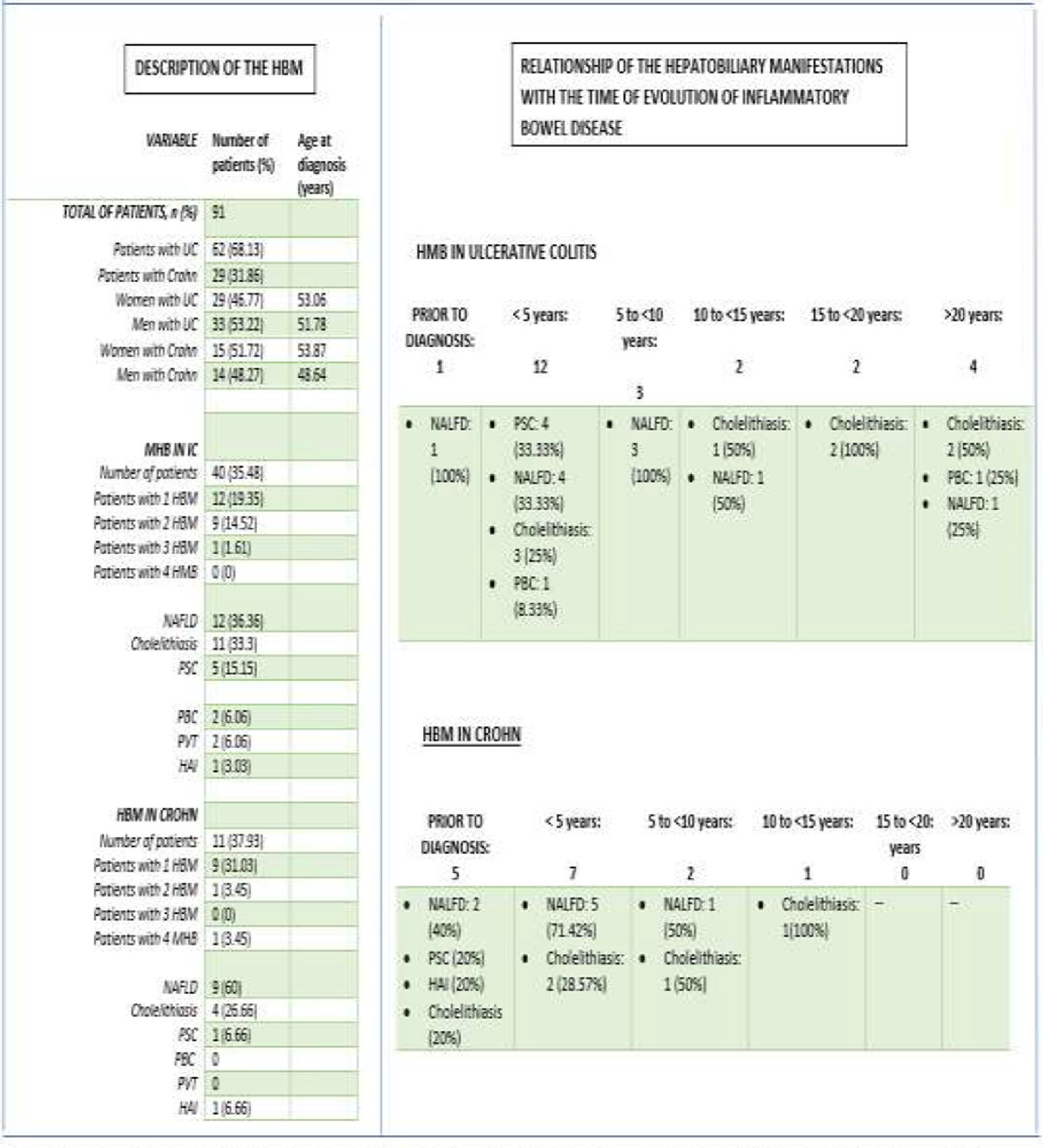
Abstracts from XVII Mexican Congress of Hepatology
More infoThis study aimed to describe the prevalence of hepatobiliary manifestations of Inflammatory Bowel Disease.
Materials and MethodsA retrospective, observational, cross-sectional study. Sixty-two patients with UC (UC) and 29 patients with Crohn's disease were included. Medical notes and imagenological studies were reviewed from the first registered consultation in search of known hepatobiliary manifestations (HBM) of Inflammatory Bowel Disease (IBD). Data were analyzed using STATA software version 16.
ResultsHBM were found in 35.48% of CUCI and 37.93% of Crohn's. In both IBD it was more common to find only 1 HBM (UC: 19.35%; Crohn: 31.03%), being the 3 most common NAFLD (UC: 36.36%; Crohn: 60%), cholelithiasis (UC: 33.3%; Crohn: 26.66 %) and PSC (SITC: 15.15%, Crohn's: 6.66%). HBM were more frequent in less than <5 years after diagnosis; however, in patients with UC, HBM were found at a longer time of disease´s evolution.
ConclusionsIt is essential to monitor liver function in patients with IBD at regular intervals; as well as implement screening strategies with imagenological studies to detect HMB since it must be considered that even in a short evolution time, we must carry out an early screening in search of these MHB.
FundingThe resources used in this study were from the hospital without any additional financing
Declaration of interestThe authors declare no potential conflicts of interest.










